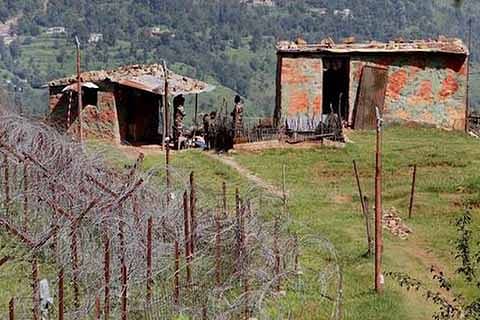Surprise is the word in circulation to describe the Indo-Pak joint statement on the reiteration of the ceasefire obligation of the two countries on the Line of Control and all other sectors. This is just one part to suggest as if India and Pakistan could never agree on anything. This is not a surprise, it is, what is often described as march in the history of nations, and the biggest point that is being missed is that the misery of the border residents of the J&K on both sides of the borderline could not have been ignored for long.
Primarily, it is seen as a decision at the military commander levels that brought about this return to the truce of the Vajpayee-Musharraf era, the worst and the golden period in Indo-Pak ties in decades. The two countries were at the brink of a war and the world was worried over the nuclear clash when the Indian and Pakistani armies stood in eyeball to eyeball position throughout 2002 following the terror attack on the Indian Parliament in December 2001. India had called that as a ” coercive diplomacy”, but any diplomacy that fails to benefit the people is no diplomacy at all . The diplomatic finesse lies in breaking the jinx and rising above many narrow-minded and short-term goals . Then came the man , whom all of us know as a poet politician Atal Behari Vajpayee, who could see the consequences of having permanent hostility between neighbouring countries. Vajpayee epitomized iconic ideas, and his words and extension of hand to Pakistan from Sher-e-Kashmir cricket stadium on April 18, 2003, opened a new chapter of improvement in ties with Pakistan. The November 26, 2003 ceasefire , about which the joint statement referred while talking of “strict observance of all agreements and understandings to cease firing on the Line of Control and other sectors” , left behind a legacy that both India and Pakistan have found it to be in the best interest of the people of the two countries.
The simple conclusion is that this legacy of the Vajpayee era was rediscovered because of some back-channel talks. That is a substantive thesis because , as many observers, have said it time and again and that makes sense too that simple use of hotline between the Director General of Military Operations could not have brought this pleasant denouement. There were some forces working behind the scene, working to bless the move to fructify. The political leadership of India and military establishment of Pakistan played a crucial role, because political leadership matters in India, while Pakistan has an establishment that is centered in Rawalpindi. The test of the current joint statement however, would be known in the days, weeks and months to come. This is not a time for instant euphoria, this is tempered by many cautions and arduous process ahead. A little recall of the history of the ceasefire agreement of the 2003, that had a noble and festive nomenclature – Eid ceasefire – reveals that the breaches started occurring in the opening days of January 2005 in Poonch sector. Indian side, acting as big brother, ignored these breaches and maintained that the ceasefire was holding on, until it broke completely in 2008. And thereafter the November 2003 was invoked in the daily bulletins of Indian and Pakistan armies accusing each other of violating the ceasefire and inflicting casualties on army personnel and civilians.
There are two unresolved questions; where do we go from here. This Agreement could not be an end in itself – because such pacts and good words serve little purpose unless larger plans are in the pipeline. And I am sure there are, because the joint statement could not be a solo act of toning down tensions between two countries.
As we know that the Indian Prime Minister Narendra Modi has shown that he always has larger goals in mind on which he works – sometimes step by step – and on other occasions, rains surprises. This needs to be understood from the prism of what happens to the internal situation in Jammu and Kashmir , where the abrogation of Article 370 and its division into two union territories, have created two clashing narratives – one that supports it, the other opposing the same, and each side has some valid arguments. Unless there is a point of convergence between the two clashing narratives for common good, the internal situation cannot be calmed through gun versus gun strategy.
Second, of course , it would have to be figured where does this joint statement stand in overall ties between India and Pakistan. India, for its stated reason, would not like it to be seen as a Kashmir-centric development, while Pakistan is struggling to remind its own people and Kashmiris that it has not given up on its original Kashmir policy – that it itself is unsure what it is – sometimes it is the UN resolutions, third party meditation, bilateral talks, roll back of the August 5 decisions taken by the Government of India. But Kashmiris know that Pakistan is seeking to serve its own purposes, not that of theirs. There is a wave of suppressed anger among the people for what Pakistan has done to them. But, the real problem is that Delhi is not doing enough to bring them to their side through soft power. Delhi wants Kashmiris to become protagonists of its soft power, that requires more and substantial steps than festivals.






